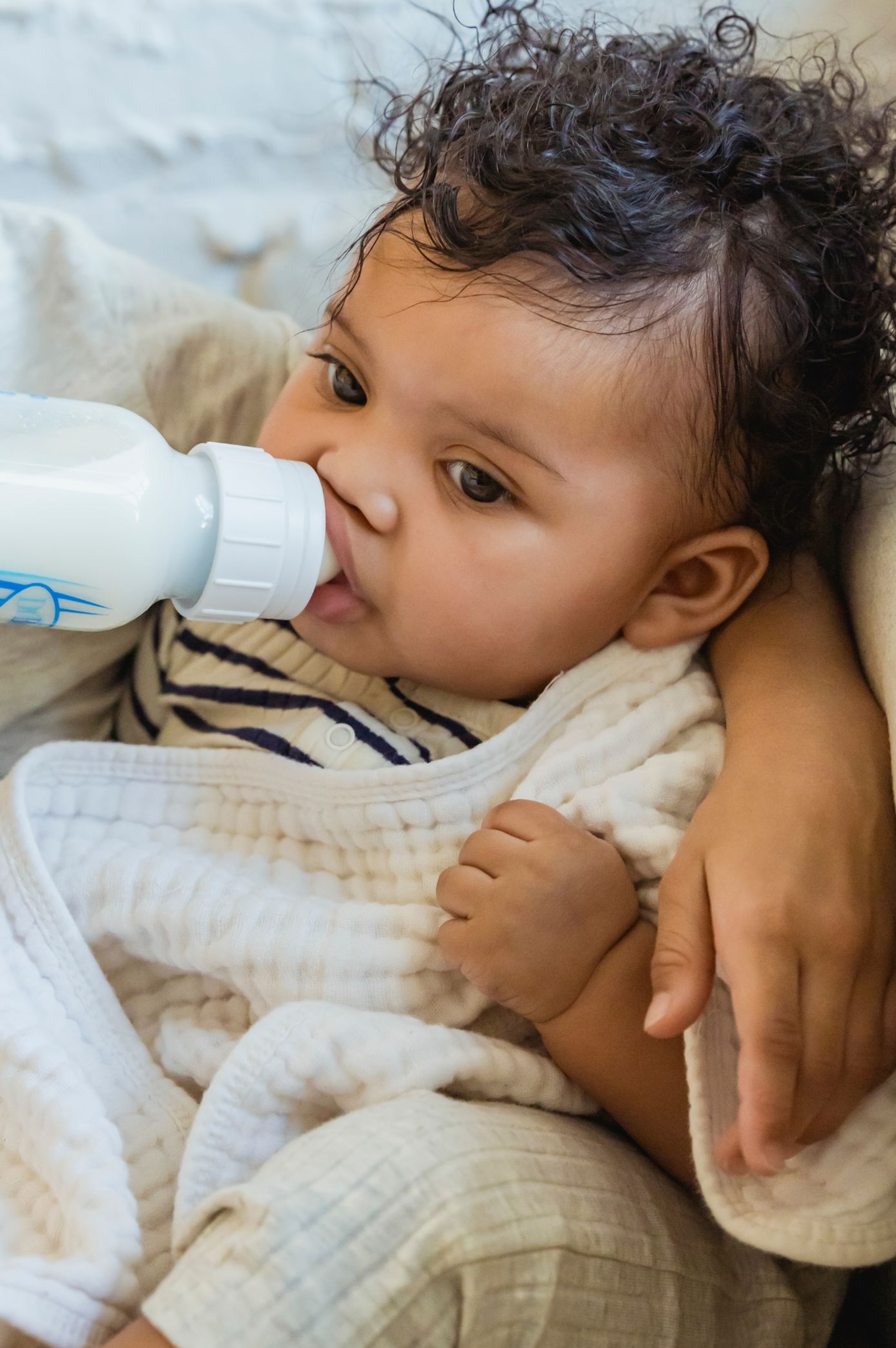Lead in food: A hidden health threat
FDA and industry can and must do better
See new analysis updated December 2017 , June 2018 and October 2019

Food is a meaningful – and surprising – source of young children's exposure to lead.
No safe level of lead in blood has been identified. In children, even very low blood lead levels can cause behavioral problems and lower IQ. Protecting children's ability to learn and thrive demands that we find effective ways to reduce exposures to lead from all sources.
EDF analyzed 11 years of data from the Food and Drug Administration (FDA), and found that food, and baby food in particular, is a meaningful – and surprising - source of lead. If it were eliminated completely, we estimate the societal benefits at more than $27 billion annually.
Key findings
EDF's analysis of 11 years of FDA data found:
- Lead was detected in 20% of baby food samples compared to 14% for other foods.
- Eight types of baby foods had detectable lead in more than 40% of samples.
- Baby food versions of apple and grape juices and carrots had more samples with detectable lead than the regular versions.
EDF also found that more than 1 million children consume more lead than FDA's limit. Eliminating lead in food would save society more than $27 billion annually in total lifetime earnings from saved IQ points.
What we did
EDF evaluated data collected and analyzed by the Food and Drug Administration (FDA) from 2003 to 2013 as part of the agency's Total Diet Study (TDS). Since the 1970s, the TDS has tracked metals, pesticides, and nutrients in food. While we evaluated all types of food collected by FDA, we focused on types of baby food because infants are most vulnerable to lead.
What we found
Overall, 20% of 2,164 baby food samples and 14% of the other 10,064 food samples had detectable levels of lead. At least one sample in 52 of the 57 types of baby food analyzed by FDA had detectable levels of lead in it. Lead was most commonly found in the following baby foods types:
- Fruit juices: 89% of grape juice samples contained detectable levels of lead, mixed fruit (67%), apple (55%), and pear (45%)
- Root vegetables: Sweet potatoes (86%) and carrots (43%)
- Cookies: Arrowroot cookies (64%) and teething biscuits (47%)
We also found that the baby food versions of apple and grape juice and of carrots had samples with detectable lead more often than the regular versions.
Recommendations
Both FDA and food producers can and must do better to reduce lead in food, especially baby food.
EDF recommends that FDA:
- Ensure lead is not added to any food contact material where it is reasonably expected to get into food;
- Make clear that the international standards for fruit juice are inadequate;
- Update its limits and food safety guidance to reflect current scientific understanding of lead risks that better protect children; and
- Encourage manufacturers to reduce lead levels in food and take enforcement action when limits are exceeded.
Manufacturers need not wait for FDA to act. EDF recommends companies:
- Set a goal of less than 1 ppb of lead in baby food and other foods marketed to young children;
- Continue to prioritize lead contaminant minimization when sourcing ingredients;
- Test more frequently during processing to identify additional sources of lead and take appropriate corrective actions; and
- Publicly commit to consumers to drive down lead levels through health-protective limits and robust product stewardship.
In the meantime, parents of young children should consult with their child's pediatrician to learn about all the ways to reduce lead exposure. They should also check with their favorite brands to ask whether the company:
- Regularly tests its products for lead; and
- Ensures that, especially for baby food, there is less than 1 ppb of lead in the food and juices they sell.
Healthy eating requires safe, nutritious food. Lead has no place in a child's diet.
Additional resources
- EDF's spreadsheet of FDA Total Diet Study 2003-2013 for Lead [XLS]
- Blog post: Too much cadmium and lead in kids' food according to estimates by FDA
- Blog post: FDA reduces maximum daily limit for lead in children's food by half
- Blog post: Good news and bad news for children: FDA's 2014 to 2016 food testing for lead
- Blog post: For children's food, heavy metals require more attention and better standards
MEDIA CONTACT
Keith Gaby
(202) 572-3336 (office)










